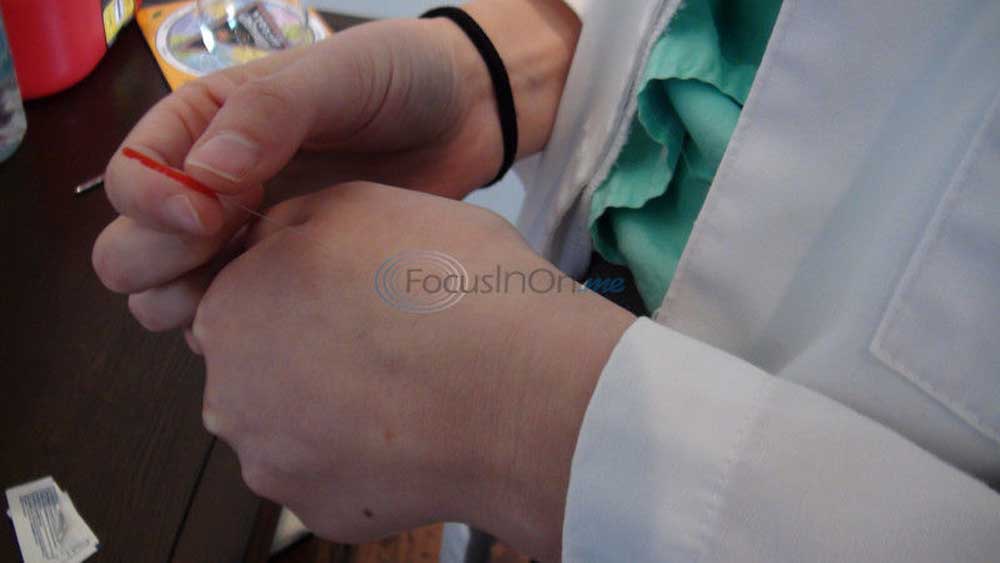Eastern meets East Texas: New clinic opens Tyler to centuries-old Chinese practice
Published 7:49 pm Saturday, April 19, 2014
Roy Durrett, 50, has lower back pain, shoulder pain and has had diabetes for years.
On Wednesday, he laid still on a table at Tyler Acupuncture and Wellness for the second time that week.
Hair-thin needles were inserted in his back and left shoulder area. The same day, he also tried cupping, an ancient Chinese therapy that uses cups to suction the skin to reproduce the effects of a deep-tissue massage.
His wife had acupuncture while on a cruise two years ago, so he grew curious about it. When his niece opened a clinic, he decided to take advantage of it.
He said he’s already found some relief during his first week of treatment.
“I’ve been diabetic for a very long time,” he said. “I’ve gotten a lot of issues that long-term diabetes causes. It’s good to try to get away from some of the medicines that I’ve had to use through the years. So I’m willing to try and see what’s here for me.”
According to the centuries-old Chinese theory, meridians, or pathways of energy called qi, run through the body. When there is pain in the body, that means there is a blockage in a meridian.
Tiny acupuncture needles remove the blockage.
“It’s basically just giving an inflammatory response to that area,” Christina Durrett, owner of Tyler Acupuncture, said.
Acupuncture also can be used for cosmetic reasons, boosting the appearance of a youthful glow over time.
As for cupping, it is another age-old Chinese therapy that improves circulation and loosens deep muscle tissue.
SOMETHING NEW
An Ontario, Canada, native, Ms. Durrett said alternative medicine was a popular option there.
While in school as a pre-med student in the States, she worked with children who had diabetes, which prompted her to shift her focus to an alternative medicine.
“I just really didn’t like the quality of care they were given,” she said. “I started thinking back to when I was a child when I was in Canada.”
She remembered visiting acupuncture clinics in her childhood.
Ms. Durrett completed a three-year program at a Florida school, which taught Eastern medicine.
She received a master’s degree in Oriental medicine, took a board exam and was licensed. Meanwhile, Ms. Durrett noticed that Eastern medicine facilities were opening in great numbers in large cities.
“I just really wanted to give East Texas a different avenue for healing,” she said. “I totally agree with and support many Western procedures … but sometimes I feel like some people need the option to heal a little bit differently — maybe without the pharmaceuticals, drugs or unnecessary treatments.”
Ms. Durrett said she believes more physicians are gravitating toward a more holistic, natural medicine, which has an emphasis on diet, exercise, stress reduction and spirituality. Utilizing those practices could help prevent some diseases, she said.
“Ideally, a patient needs to have the best of both worlds,” she said. “You can’t throw away and totally discard going to your M.D. for those wellness checkups, but you can’t just rely on that form of medicine. You have to have a preventive outlook.”
But it’s not happening that fast in East Texas. According to a Centers for Disease Control and Prevention report released this month, certain regions of the country have experienced more growth in the use of alternative or complementary medicine.
For example, the use of yoga with deep breathing or meditation was about 40 percent higher in the Pacific and Mountain regions of the country. The use of practitioner-based chiropractic or osteopathic manipulation was almost twice as high in the West North Central region.
Dr. James Morris, a physician with East Texas Medical Center’s Rusk clinic, is at least one physician in East Texas who advocates natural healing, beginning with a plant-based diet and exercise. He also believes chiropractic sessions and Eastern medicine practices such as acupuncture, yoga and meditation could be better alternatives for pain relief and stress reduction.
Drugs are often a quick fix with side effects, he said.
“If there are other ways to do it without putting a pill in my mouth, I would definitely do it,” he said.
Morris, a vegetarian, said medical schools generally don’t emphasize nutrition and exercise. Therefore, many doctors aren’t trained to address those needs.
His focus has been on prevention — encouraging patients to improve their diets, exercise and find alternative ways to relieve pain, if possible. He gives his patients the names of well-known doctors who emphasize nutrition to prevent and manage disease medicine such as Joel Fuhrman and Dean Ornish. He also points them to the website nutritionfacts.org.
But many Americans get stuck in a cycle of an unbalanced diet, a sedentary lifestyle and numerous medications.
“Statistically, in my practice at least, less than half of 1 percent will follow my advice,” he said. “That’s about one in a thousand.”
The key, he said, is doing your own research.
“Education. Education. Education,” he said. “If you don’t have the knowledge, you’re not going to do it.”
Information about Chinese medicine and other Western practices such as herbal therapies, aromatherapy and supplements are abundant at Ms. Durrett’s facility. She is certified to teach yoga and offers help getting started with meditation. She asserts that yoga and meditation in the U.S. are not associated with religious activities but are natural, physical ways to reduce stress.
In addition, she said she wants to help all people reap the benefits of eastern medicine, not just those who are typically drawn to it.
CLOSER LOOK:
Tyler Acupuncture and Wellness
6647 Oak Hill Blvd.
903-787-5842
tyleracupuncture.com







